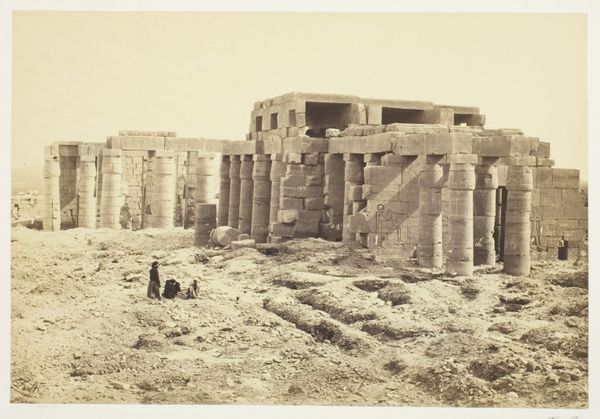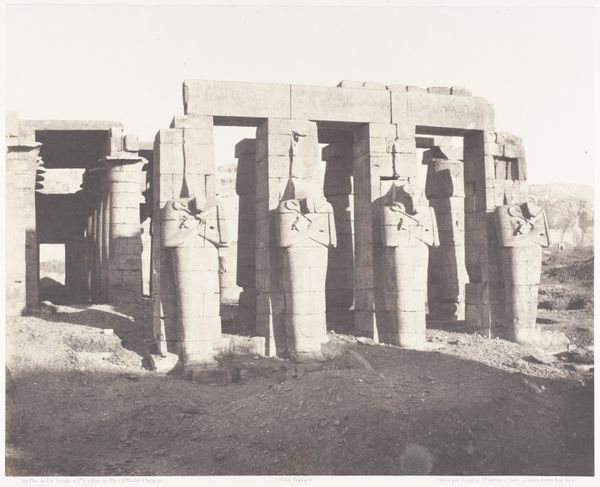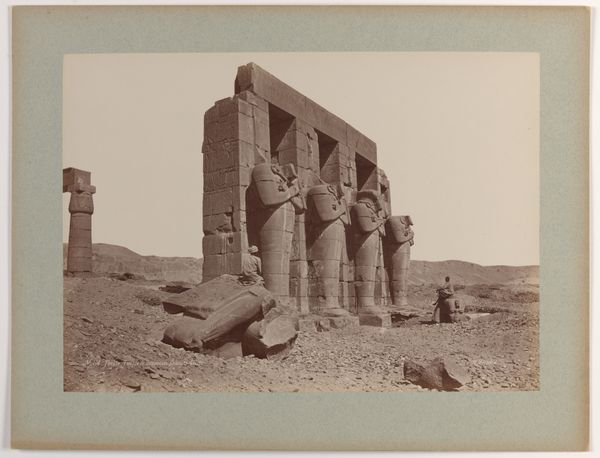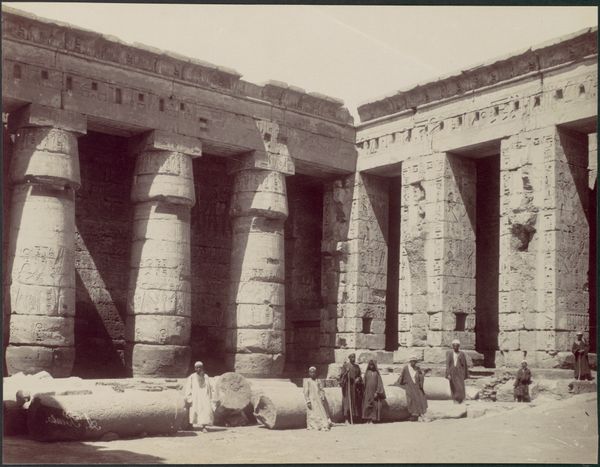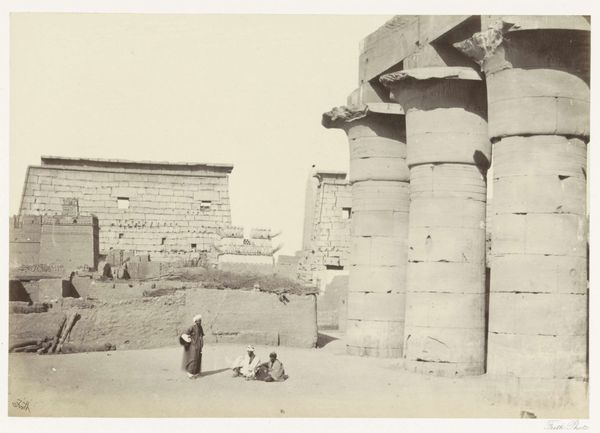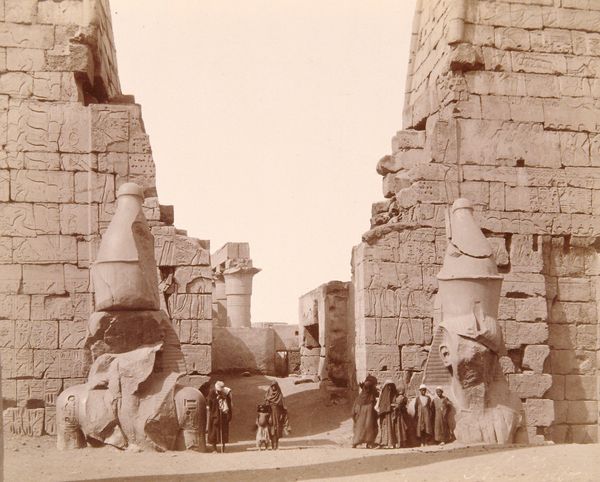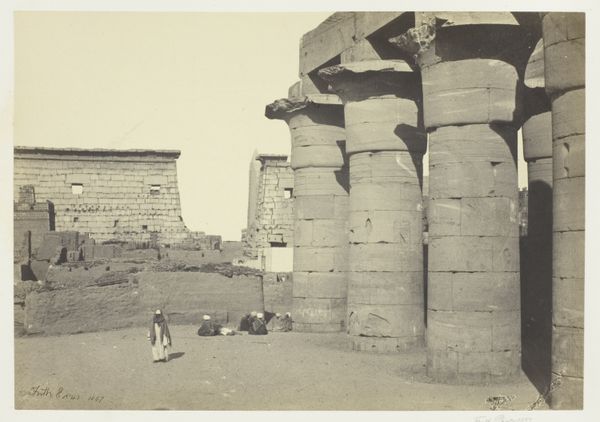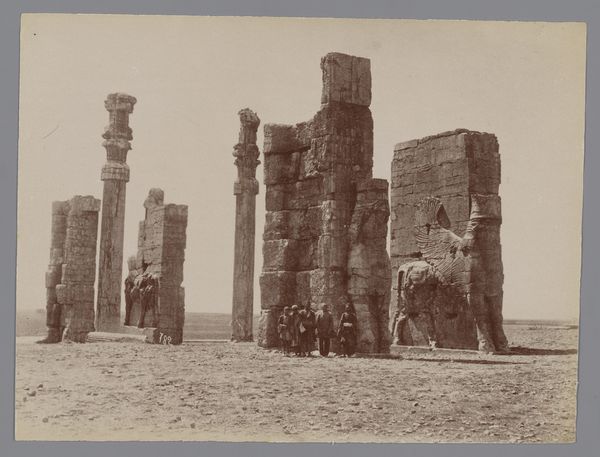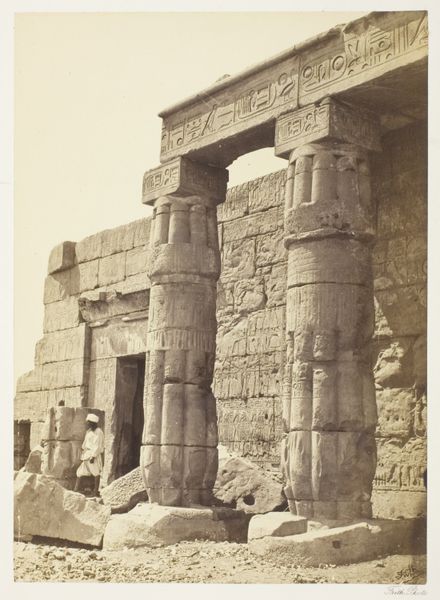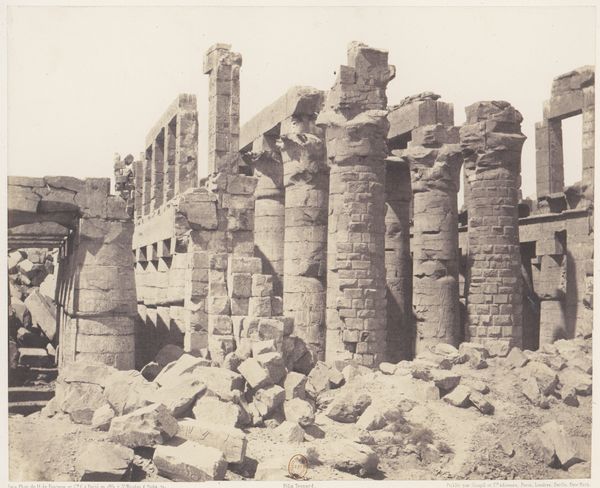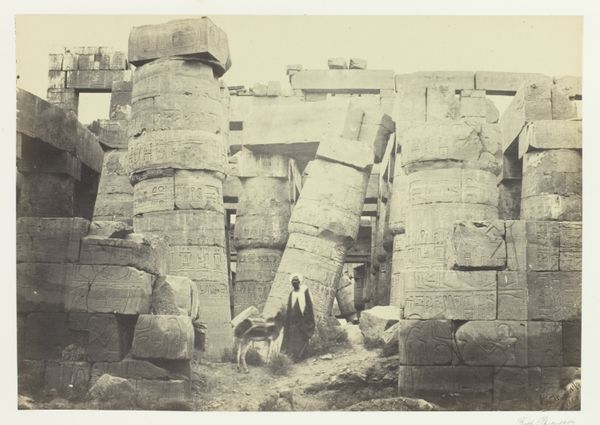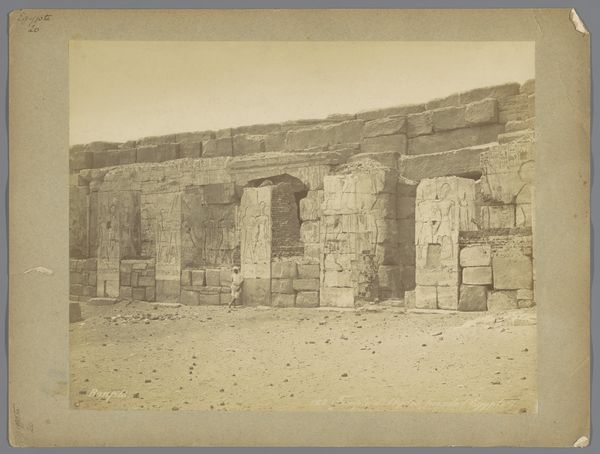
print, photography, gelatin-silver-print
#
print photography
#
16_19th-century
#
natural tone
# print
#
colourisation
#
war
#
landscape
#
ancient-egyptian-art
#
photography
#
egypt
#
ancient-mediterranean
#
gelatin-silver-print
#
men
Dimensions: 16 × 22.7 cm (image/paper); 29.1 × 42.6 cm (album page)
Copyright: Public Domain
Curator: Standing before us is Francis Frith’s gelatin silver print titled "The Memnonium, Thebes, from the Plain," created in 1857. Editor: Oh, wow, I feel instantly transported. It’s desolately beautiful, like stumbling upon a forgotten kingdom baking in the sun. The ruins are so imposing! Curator: Frith's meticulous composition draws the eye through the fragmented architecture. The strong horizontals and verticals create a stark geometric framework, while the figures provide scale and context. Editor: I see that, the lines pull me in! The natural tones of the print add to the sense of timelessness, like we’re peering into the past. Is it just me, or can you almost feel the heat radiating off those ancient stones? And the humans kind of blend in–like specks against infinity! Curator: Indeed. Frith deliberately employs a high vantage point and extensive depth of field, inviting the viewer to consider both the immense scale of the temple complex and the subtle textures of the stone. Observe how the play of light and shadow emphasizes the ruin’s structure and the gradual decay it’s undergoing. Editor: It's true; even though it's a black-and-white print, there's a rich interplay of light defining form and volume everywhere you look. I wonder about those tiny figures though; the men with their camel... Do they feel dwarfed by the past or connected to it? It's heavy—both beautiful and heartbreaking at once. Curator: That tension, that dialectic between past glory and present-day experience, is central to the print’s power. Frith uses a tonal range that is restrained, creating a formalist effect by contrasting dark architectural masses with a washed-out sky—heightening the desolation while enhancing monumentality. Editor: Absolutely. Looking closer, I realize Frith wasn’t just capturing a place; he was revealing something profound about time itself. It’s the kind of image that stays with you. Curator: Precisely. It invites us to reflect on the intersection of time, place, and representation. Editor: It’s been a somber pleasure. There is such palpable weight to this relic. It’s ancient but ageless.
Comments
No comments
Be the first to comment and join the conversation on the ultimate creative platform.
